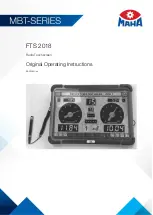iConnectivity
iConnectMIDI™ Owner’s Manual
Revision 0.5
Page 35
Need help?
Email us at
support@iconnectivity.com
tel
+1 (403) 457-1122
fax
+1 (403) 775-4168
url
www.iConnectivity.com
Owner’s Manual
instrument/controller; more
devices will need a powered USB
hub
•
bidirectional transmission of MIDI
data at full USB speed
USB Host 2
USB Host 3
USB Host 4
USB Host 5
USB Host 6
USB Host 7
USB Host 8
•
ports accessable via a powered
USB hub
•
ordering of USB ports in software
is dependent on their connection
order
•
access to class compliant USB
MIDI instruments/controllers
iCM USB H2
iCM USB H3
iCM USB H4
iCM USB H5
iCM USB H6
iCM USB H7
iCM USB H8
For Windows XP users:
Windows XP does not accurately identify iConnectMIDI port names
when iConnectMIDI is connected to your computer. Each port on iConnectMIDI will appear as:
USB Audio Device
USB Audio Device [2]
USB Audio Device [3]
USB Audio Device [4]
USB Audio Device [5]
USB Audio Device [6]
USB Audio Device [7]
USB Audio Device [8]
USB Audio Device [9]
USB Audio Device [10]
USB Audio Device [11]
USB Audio Device [12]
To determine which USB Audio Device corresponds to a iConnectMIDI port requires
connecting a sound module MIDI instrument to the desired MIDI output port on iConnectMIDI.
If your Windows application has sequence playback capability, activate a sequence to play to
the selected output MIDI port. Ensure the sequencer track and sound module are set to the
same MIDI channel. Play the sequence, changing USB Audio Device port selection until sound
is heard from your sound module. You many need to stop and restart the sequence between
selecting a different USB MIDI output port.
If your application does not have a sequencer, then you will need to connect a MIDI instrument
or controller (e.g. keyboard or drumpad) as your MIDI event source device. Determine which
input port this is connected to by a visual indicator within your application that MIDI data is
being received. Select the USB Audio Device from the list until the MIDI data indicator shows
that MIDI data is being received. Once your MIDI input is established, you will need to
determine the MIDI output. Select one of the USB Audio Device ports as the destination port.
Listen for sound from your sound module MIDI instrument while playing on your MIDI
instrument that produces MIDI events.


















